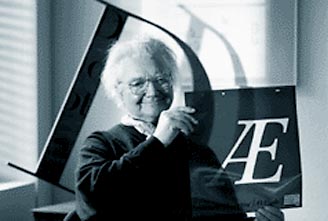
2-
Goudy is a typeface designed by Frederic Goudy who lived from 1865 to 1947.
3-
the Goudy font was designed in 1915
4-
Goudy is classified as Old Style
5-
In typography, Old Style is a style of font developed by Renaissance typographers to replace the Blackletter style of type. Based on ancient Roman inscriptions, these fonts are generally characterized by low contrast between thick and thin strokes, bracketed serifs, and a left-leaning axis or stress.
6-
Other fonts also in the Old Style classification are Garamond, Centaur, and Sabon
7-
Things going on in 1915 when Goudy was created were:
Alexander Graham Bell inaugurates U.S. transcontinental telephone service.
Pluto is photographed for the first time but was not recognized as a planet.
WWI
Denmark amends its constitution to allow women's suffrage.
Former cartoonist John B. Gruelle is given a patent for his Raggedy Ann doll.
Woman's suffrage: In New York City, 25,000-33,000 women march up Fifth Avenue to demand the right to vote.
Albert Einstein publishes the general theory of relativity.
8-
Frederic Goudy created many font families including:
Berkeley Oldstyle
Copperplate Gothic
Village
9-
life of Fredric Goudy:
(http://en.wikipedia.org/wiki/Frederic_Goudy)
Frederic W. Goudy (1865–1947) was a prolific American type designer fonts include Copperplate Gothic, Kennerley, and Goudy Old Style. . He also designed, in 1938, University of California Oldstyle, for the sole proprietary use of the University of California Press. The Lanston Monotype Company released a version of this typeface as "Californian" for wider distribution in 1956, while ITC created a digital version, called ITC Berkeley, in 1983.
In 1903, Goudy and Will H. Ransom founded the Village Press in Park Ridge, Illinois. This venture was modeled on the Arts and Crafts Movement ideals of William Morris. It was moved to Boston, then New York. In 1908, he created his first significant typeface for the Lanston Monotype Machine Company: E-38, sometimes known as Goudy Light. However, in that same year the Village Press burned to the ground, destroying all of his equipment and designs. In 1911, Goudy produced his first "hit," Kennerly Old Style, for an H. G. Wells anthology published by Mitchell Kennerly. His most widely used type was Goudy Old Style.
From 1920 to 1947, Goudy was art director for Lanston Monotype. By the end of his life, Goudy had designed 122 typefaces and published 59 literary works. Goudy was the originator of the well-known statement, "Anyone who would letterspace blackletter would steal sheep
Goudy wasn't always a type designer. "At 40, this short, plump, pinkish, and puckish gentleman kept books for a Chicago realtor, and considered himself a failure. During the next 36 years, starting almost from scratch at an age when most men are permanently set in their chosen vocations, he cut 113 fonts of type, thereby creating more usable faces than did the seven greatest inventors of type and books, from Gutenberg to Baramond.
Asked how to say his name, he told The Literary Digest "When I was a boy my father spelled our name 'Gowdy' which didn't offer any particular reason for verbal gymnastics. Later, learning that the old Scots spelling was 'Goudy,' he changed to that form, while I, for some years, retained the old way. My brother, in Chicago, still spells with the w. However, I find that occasionally a stranger pronounces the word with ou as long o in go, sometimes as ou in soup, or goo and less frequently with the ou as oo in good. I retain the original pronunciation with ou as in out."
Some important dates in the life of Goudy were:
(http://www.linotype.com/396/fredericwgoudy.html)
1888: book-keeper for credit and mortgage companies. 1889: moves to Chicago, works in real estate. 1892: launches "Modern Advertising" magazine which issues only a few numbers. 1895: opens a print workshop in Chicago and prints the "American Chap-Book". 1897: designs his first type, Camelot Old Style. Produces typographical designs for various publishing houses and companies. 1903: founds the Village Press. The first publication is an essay by William Morris. 1904: his publications are awarded prizes at the world exhibition in St. Louis. 1908: the Village Press is destroyed by fire. 1909: the Press is reopened and run under Goudys management in Forest Hills. 1914: signs a contract with the American Type Founders Company governing the manufacture and use of his typefaces. 1916: sells 8 new typefaces to the Caslon type foundry in London. Numerous companies commission Goudy™ to design exclusive typefaces for them. 1920–40: art consultant to the Lanston Monotype Co. 1924: he and his publishing house move to Marlborough-on-Hudson. 1925: opens his own type foundry. 1939: the workshop for type design, type cutting, type foundry, typesetting, printing and bookbinding are destroyed by fire. 1940: teaching post for calligraphy at the University of Syracuse. 1947: the Goudyana exhibition is opened in Goudy’s presence at the Library of Congress in Washington. Goudy designed a total of 116 fonts and published 59 literary works.
10-
Goudy once said “Once in a while a type face boy some other designer seems to present an interesting movement or quality that I like. I take an early opportunity to make it mine, frankly and openly, in the same way that a writer might use exactly the same words as another, but by a new arrangement of expression.”
http://www.linotype.com/396/fredericwgoudy.html
http://en.wikipedia.org/wiki/Frederic_Goudy
http://www.spiritus-temporis.com/1915/


